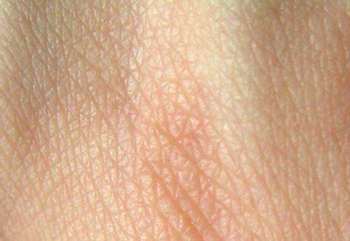 Human skin structure. Credit: WikipediaJune 11, 2018 (Phys.org) -- While humans and other species share some of the same genetic information, new research found that humans are unique among mammals when it comes to the types and diversity of microorganisms on our skin. This difference could have implications for our health and immune systems.
Human skin structure. Credit: WikipediaJune 11, 2018 (Phys.org) -- While humans and other species share some of the same genetic information, new research found that humans are unique among mammals when it comes to the types and diversity of microorganisms on our skin. This difference could have implications for our health and immune systems.
"We were quite surprised when we saw just how distinct we humans are from almost all other mammals, at least in terms of the skin microbes that we can collect with a swab," said Josh Neufeld, a professor of biology at the University of Waterloo and senior author of the study.
A team made up of researchers from the University of Waterloo and the University of Guelph conducted the most comprehensive survey of mammals to date and found that human microbiome -- the collection of microorganisms such as bacteria, fungi, and viruses that naturally occur on our skin -- contains significantly less diversity than that of other mammals.
"The first line that gets hit by modern hygienic practices is our skin," said Ashley Ross, a co-author of the study and a graduate student at Waterloo at the time of the research. "Our skin is the largest organ of the body and the main barrier to the external environment."
(more)
READ MORE: Phys.org











